Yarn Substitution – Methods, Criteria And Useful Tips
Jump To:
Let us check out a story! Unfortunately, there’s a pattern you’re excited about, but the yarn advised by the designer is not available or has been phased out. Oh no! Now that you know how to crochet, you had such high hopes for the pattern, and you did not get to work on it just because the supplies were out of stock. You may find a different pattern similar to the one recommended in an older pattern book by searching carefully. This is when you switch to yarn substitution. Yarn substitution uses different fibers in traditional sewing thread to produce the same result while saving time and money.
As a crocheter, you know how important it is to have a good supply of yarn on hand. But if you’re like most knitters, your stash is overflowing, and the yarns inside are starting to rot. What’s a knitter to do? The solution is simple. Swap out your old stash for an equally high-quality new one!
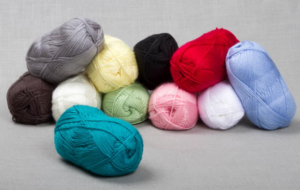
Criteria For A Perfect Yarn Substitution
Yarn substitution is a process by which a more sustainable material replaces the yarn. It is done to reduce the environmental impact of the product.
The criteria for a perfect substitute are:
- Durability and ability to withstand wear and tear.
- Ability to keep its shape and size when stretched.
- Retention of elasticity after repeated use.
- The yarn should not cause any allergies or skin reactions.
- The yarn should not have any negative impacts on the environment.
Most patterns are written using a variety of gauge sizes and weights, which can make it difficult to substitute. You might have to find different patterns and complete swatches to change these measurements.
Match the yarns by weight for yarn substitution
Here is a general overview of yarn weight in knitting and crochet.
Yarn weight is the thickness of the yarn. The weight of a yarn is measured in grams per 100 meters or yards, which is called the gauge. Yarns with a thicker gauge are called heavy-weight yarns, while those with a thinner gauge are called light-weight yarns.
Yarn substitution for different fabric types can be done using the same weight and type of yarn but changing the needle or hook size.
The weight of yarns can make a difference. What you make and the result might seem different than desired. When doing a project, you’ll need to figure out the amount of yarn you’ll need by figuring out how big your project is. However, if you don’t match up those as closely as possible, you’ll likely end up with less or different yarn than necessary.
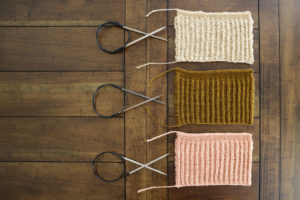
Compare the fiber content for yarn substitution.
Fiber content is the most important factor when it comes to yarn substitution. The first question that comes to mind is whether the yarn substitute has a similar texture as the original. The answer is yes, but it doesn’t have the same sheen or drape.
You can measure the fiber content for yarn substitution by its length and diameter. The higher the length and diameter, the more durable the yarn. Different synthetic fibers have other properties, such as strength and elasticity, worth mentioning.
By following specific steps, you can find out fiber content in your yarn vs. the yarn in the project. Ultimately, you will have more options to choose from and get closer to getting that perfect product!
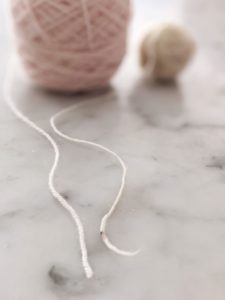
Compare yards per gram for yarn substitution.
Yarn substitution is a common practice in crocheting. Companies use yarn substitution to reduce costs and increase profits. This process involves using different types of yarns with different weights per unit length, which allows for more efficient production.
The most popular type of yarn used in this process is polyester. It has a lower weight per unit length than cotton, but it has a much better strength-to-weight ratio. Thus, companies can produce more items with less yarn and save on production costs.
If your yarn is of the same weight and its yards/grams relationship is close to the original yarn, you’re one step closer. Even if a yarn with the slightest difference in weight existed, you would be able to find one that works for you.
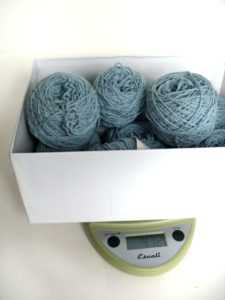
Match up the gauge for yarn substitution
A gauge is a unit of measurement for yarns used in knitting and crocheting. The gauge is usually expressed as several stitches or rows and is generally measured in centimeters or inches.
The gauge for yarn substitution is the number of stitches and rows you need to achieve a certain size. Here is the formula for calculating it:
Gauge Number = (number of stitches) x (number of rows)
(number of stitches) x (number of rows) = Grams per meter
The gauge for yarn substitution is a measurement of how many stitches and rows are in a given distance.
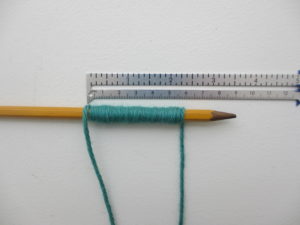
Ask the crocheting community for advice.
The crocheting community has a lot of experience with yarn substitution. The advice for yarn substitution is so varied that it would be impossible to list them all. However, some general guidelines can help you decide what kind of yarn to use as a substitute.
What can I use instead of yarn?
In general, animal fibers feel warm, and plant fibers (cotton, bamboo, linen, hemp) feel cool. Fibers like wool and silk can do both, keeping you warm when it’s cold and cool when it’s warm! Yak, bison, angora, and camel are amongst the warmest of the fibers.
How do you substitute yarn size?
How do you substitute yarn in crochet? When you look for a suitable substitution, look for a yarn with the same yarn icon or the same keywords. For example, if your original pattern calls for a DK weight, look for the #3 Light icon or the words DK on the new yarn.
Can I substitute wool with cotton?
When substituting one yarn for another, it’s important to remember that yarns are balled according to weight. As cotton is heavier than a wool-acrylic mix, there’ll be fewer metres of it per ball. You might have found a pattern you like and the yarn for it isn’t available anymore.
Can I crochet without yarn?
Crochet with Plarn “Plarn” stands for plastic yarn. It’s easy to make plarn; simply cut plastic grocery bags into strips and then tie these plastic strips together into a single long strand. Learn how to make plarn, and find our most popular plarn crochet patterns below.
Can I make yarn?
Yarn is made from fibers that can come from plants or animals. People have been spinning their own yarn since pretty much forever and once you get started, it’s extremely easy to do. You really only need a stick and some kind of fiber.
What is 50grams yarn?
50g stands for “50 grams”. This refers to how heavy the yarn is. 50 grams of yarn is equivalent to approximately 1.76 ounces of yarn. So if you have 2 x 50 gram balls it is equivalent to a 100-gram ball of yarn.
Can I use a different weight yarn?
Substituting yarn of a different weight is possible but it does take planning. There are other factors to consider as well, such as the size of the crochet hook and how tight you crochet.
Can I crochet a blanket with different yarn weights?
Working with different yarn weights can create a pattern that offers different textures to the rows and different colors. You could create a great blanket, a fabulous scarf, and even a sweater with different colors and yarn weights. Learn more about gauge and why it’s an essential term in crochet.
Can you crochet with different size yarn?
If you want to use a different yarn, matching yarn weight properties is essential if you are making a jumper or some other fitted garment. However, you can do what you want for crochet squares as a blanket is a blanket, no matter the size. Take this pattern, for example.
Can I substitute DK yarn for worsted?
This is usually the most important thing to get right when substituting. If you’re using a pattern written for worsted weight but want to use a DK weight yarn, that’s okay, but you’re going to need to do a little math first (and possibly adjust your needle size) to make sure the gauge works out.
What can I use instead of worsted weight yarn?
4ply is also known as fingering and the terms worsted and aran can be substituted for one another. However, it is worth noting that some aran yarns can be slightly heavier than worsted.
Can I use acrylic instead of wool?
It gives a whole new type of garment as the acrylic can take some of the itchy parts away from the natural wool in wool acrylic yarn blends. In cotton acrylic yarn blends, you can get a much softer type of yarn as the cotton will add softness to the yarn, while the acrylic will provide more flexibility.
What weight is a skein of yarn?
The full skein weighs 85 grams. We multiplied 103 by 20 to get 1,700, then divided 1700 by 18 to get 94.4, which is how many yards there are in the mystery skein.